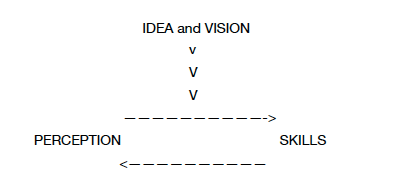Augmentative tools and democracy in art
This article is about a view, or perhaps a wish, found among people working with AI and interested in creativity, that AI can provide augmentative tools, allowing more people to be creative and bringing about democracy in art.
Personally, I belong to those who are more interested in augmentative AI, providing new and more powerful tools for people, than the idea of AI working as an autonomous artist. I also understand the drive in those who want to create a creative machine, but I am not one of them. The idea certainly appealed to me when I was younger, but nowadays I am mainly interested in finding expression to my own experiences and feelings.
While I agree that augmentation of individual human capabilities is a sound route for AI to take, it is however not so clear which form it may take. When someone wishes to have AI that will allow her to paint like Rembrandt… what exactly are we thinking about. What is the role of the human actor in relation to the augmentative power of AI in such an arrangement? Transforming a doodle to a painting in Rembrandt’s style? What’s the point? Instant gratification seldom gives anything of lasting value. Even more so when everybody will have the same capability available.
This gets us to the idea of democracy in creating. However, there are prerequisites even for augmented creation, in order for it not be simply automatic. To have a tool which allows anyone to draw like Picasso sounds meaningless and absurd to me. To be meaningful creation has to start from a personal meaning, context and expression. Otherwise it is mere copying.
The importance of practical skills is no longer primary in contemporary art. Also, something that people coming from AI to art often overlook, contemporary art, is not so much about art objects or artefacts but activity. A way of life, not commodity. This is why people keep coming to art, to create and to appreciate. As a way of life, art belongs close to people. I am not really interested in megastars or art auction business. Those also exist somewhere, but art mainly exists within the lives of artists and those who appreciate art.
Now, if making art no longer depends on traditional skills like painting, it still requires specific skills. Furthermore, with augmented tools available for creation, the need for developed visual perception is more important than ever. One needs to cultivate perception to see what is good and what works, even if the actual production would happen automatically. I would illustrate my conception of creative work like this.

The artist realises her idea and vision in a feedback loop between skills and perception. In addition, all this happens in a context. The artist’s personal context is a crucial element contributing to the result, creation never happens in a vacuum. Furthermore, the experience accumulated by the artist adds to the perceptive and practical skills. A significant part of this process is intuitive or unconscious.
Instead of mere augmentation, I would rather see tools or frameworks which enable, facilitate and encourage experimentation and exploration, while allowing the user to follow her own path and direction.
While the above concept derives from my conception of fine arts, I am aware that creativity is not limited to art. Indeed, we used to have a study circle on creativity when I worked in product development. To a varying degree the same observations apply to design, technology and other fields. In order to create something different rather than copy, one needs to have an idea or a vision, maybe just a faint one to begin with, as well as the perceptive and practical skills to realize the vision.


